Aviation Safety Monitor Weekly Report for the Week Ending May 4, 2024
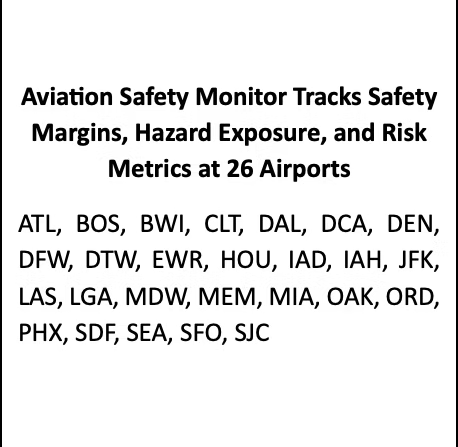
For New Readers: Please read our article “Did Safety Degrade in the National Airspace System in the Winter of 2022-2023?” that applies our methods and data to examine whether safety margins decreased during the events of winter 2022-2023.
The Aviation Safety Monitor measures safety margins by estimating the frequency, duration, and severity of buffer encroachments. Our paper “How Do We Measure Safety Margins?” provides a detailed description of the methods and data. That can be found here https://www.robust-analytics.com/measure on the Robust Analytics website.
Weekly Safety Margin Update. This week we update charts on safety margins for different time periods: the most recent week, the past month, and the past two months. We begin by taking a closer look at safety margins for the seven days ending May 4. Figure 1 displays estimates of encroachment durations per aircraft for each hour over the seven days. This offers a detailed look at how safety margins vary over the operating day. Figure 1 also indicates the typical range of the data by showing the 25th, 75th, and 90thpercentile values of the duration per aircraft metric. The percentiles are calculated from 14 months of data from May 2022 through June 2023.
The week ending May 4 continued the relatively high safety margins that we saw during the month of April 2024. There was one hour with a high encroachment duration value, and all other periods were low and well below the 75th percentile. The week ending May 4 continued the slow but steady improvement in safety margins since the spikes in encroachment durations back in March.
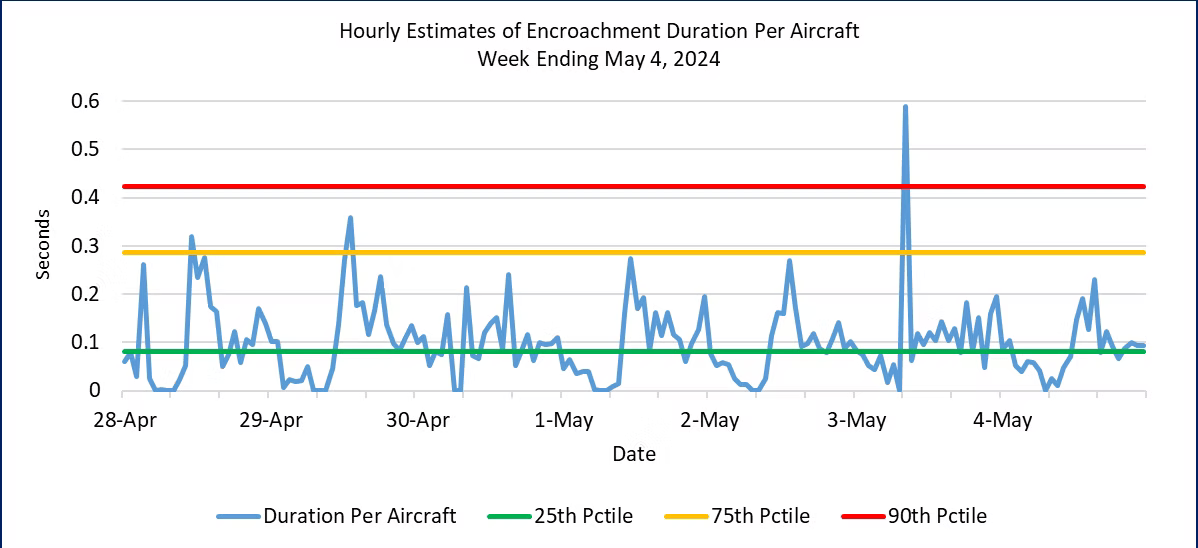
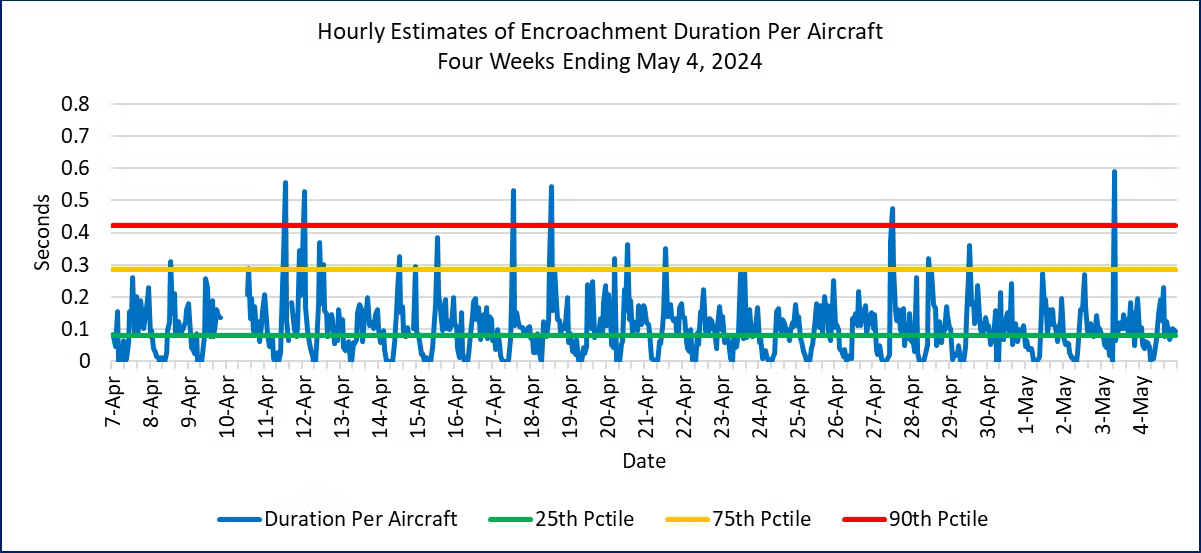
If anything, there is a small trend decrease over the past month, as shown in the moving average plot in Figure 3. They show a jump in durations around March 31, with moderate increases for several days in the second week of April. The past two weeks are lower than average with most hours hovering just above the 25th percentile.
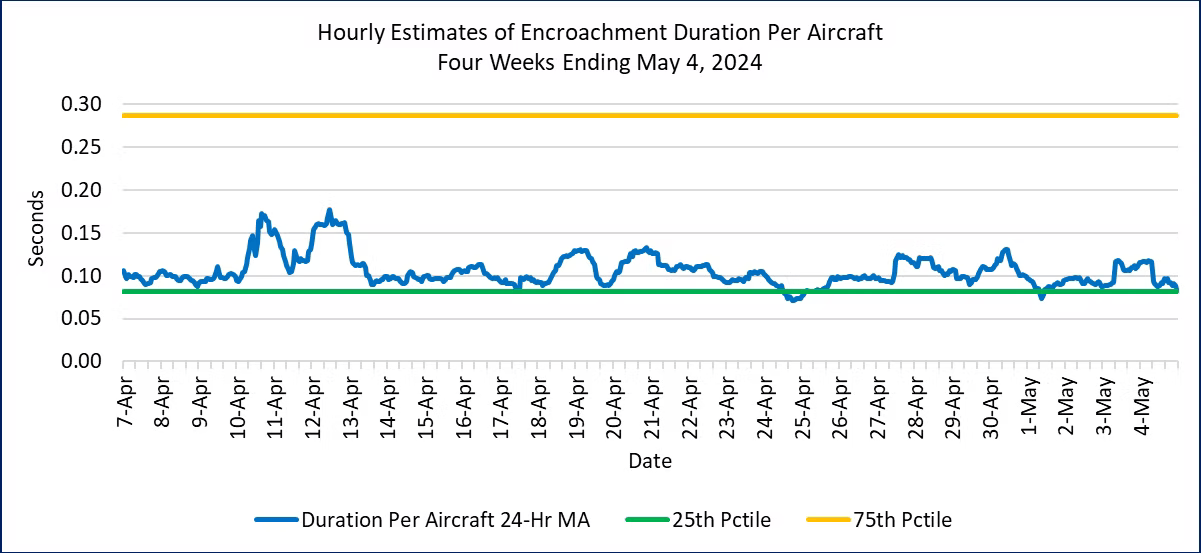
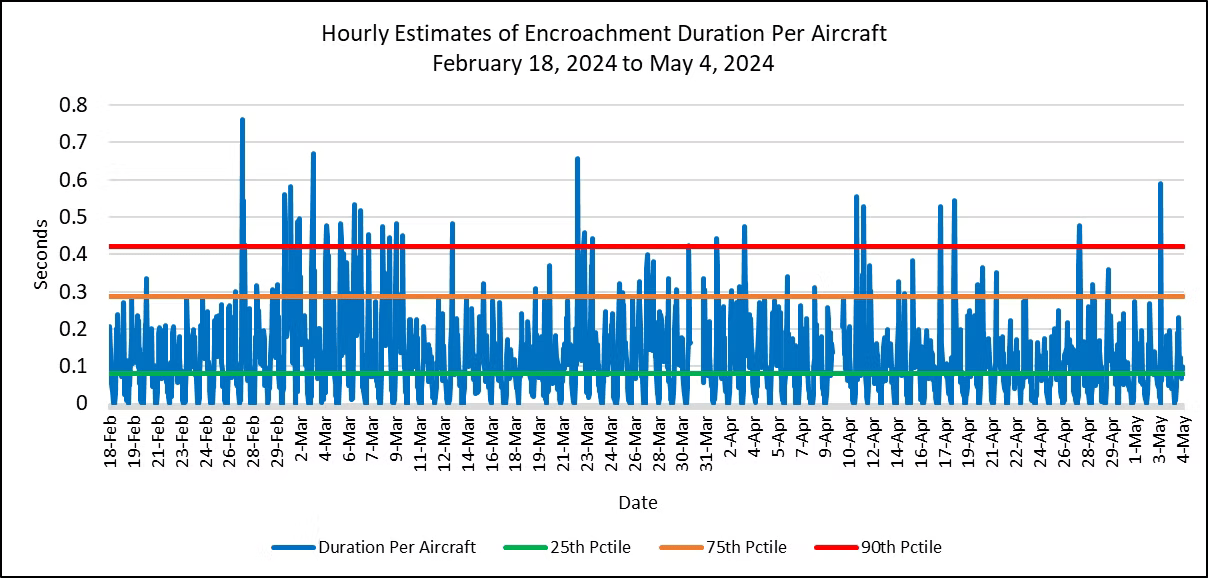
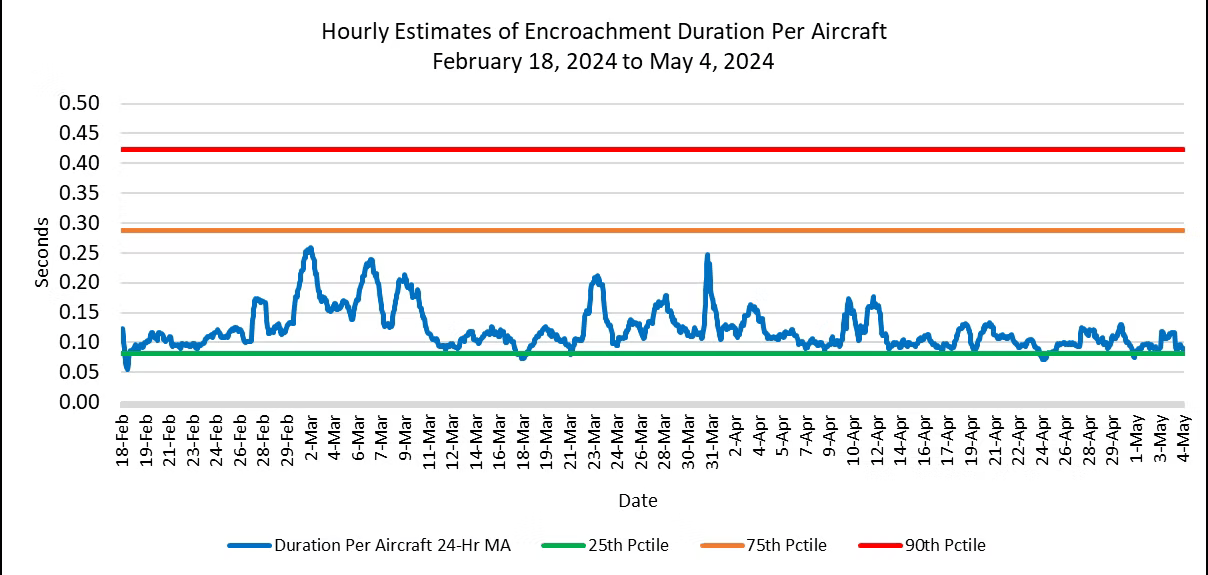

February 18, 2024 through May 4, 2024
How severe are these encroachments? The FAA defines three separation conformance categories based on how far they are from the separation index. (See the description “How Do We Measure Safety Margins?” for details on the conformance categories and how we measure them.) In that classification system, Conformance Categories A and B are the most severe. Under our definition of a buffer encroachment, Category A and B encroachments are counted under all meteorological conditions.
Figure 7 displays information on the most severe separation conformance categories. The daily durations and event counts for the sum of Category A and B encroachments are shown in Figure 7. The pattern differs from the Figure 1, as there is no obvious trend during the time period. This suggests that Category PE and C encroachments are affected by different factors from Category A and B. We will take a deep dive into those differences in a future weekly report.

The Aviation Safety Monitor summarizes output from Risk Tracker, the Robust Analytics in-time terminal airspace hazard and safety metrics monitoring system.
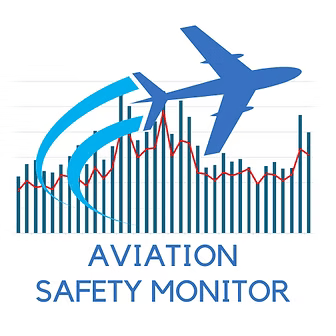
About the Aviation Safety Monitor
The Aviation Safety Monitor provides quantitative estimates of safety margins at 26 airports in 17 metropolitan regions in the United States. This information complements data on several safety-related events that are published elsewhere, with the FAA’s Runway Incursion Statistics website a good example. However, the available safety information can be misleading if it only reports the frequency of violations with no insight into how safety buffers may vary minute-to-minute and day-to-day. The Aviation Safety Monitor aims to provide this insight every week.
